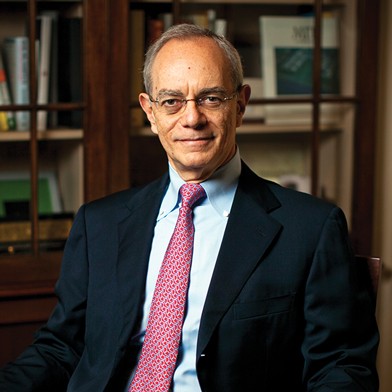From the President: A More Welcoming MIT
Following our students’ lead to build strength through diversity.
Every MIT faculty member knows the feeling: when you realize that whatever subject you are teaching your students, in that moment they are teaching you more.
Often they teach you how to be a better teacher, or how to crack open old assumptions. But this year, on the question of how to build strength through diversity, a number of our students taught us how to lead.
I chair a group called Academic Council, comprising about 30 of MIT’s top academic and administrative leaders. Last December, for the first time, we invited students to our meeting. The leaders of the Black Students Union and Black Graduate Students Association presented their ideas for making MIT more diverse and more welcoming for all.

These were MIT students, so you will not be surprised that they were magnificent: thoughtful, creative, persistent, specific, collaborative, constructive, and serious. They offered their ideas with respect—and earned tremendous respect in return.
The students brought their recommendations on issues specific to MIT today: improving orientation, adding “booster shots” of inclusion education after freshman year, enhancing financial aid, hiring more diverse mental health staff, and more. As one of several first steps, Academic Council volunteered to be the pilot group for training on how to counteract unconscious bias. Today, these students are collaborating with Academic Council’s new Working Group on Inclusion to address their recommendations and the problems they aim to solve, and I am confident that we are on a path to sustained and meaningful change.
When these students spoke to Academic Council, however, they made it clear that beyond these practical suggestions, some of what needs to happen at MIT has to do with human values. They are asking us to say out loud that we value the diversity of our community. I do. They are urging all of us at MIT to maintain a human perspective, and to remind each other that while the quality of our students’ work is important, their mental and physical health is most important. I agree! And finally, they are making a powerful case that a more welcoming, more inclusive MIT would be better for absolutely everyone. They are right!
I am grateful for their lessons in collaborative leadership. And I look forward to working with them to make this vision real.
Keep Reading
Most Popular
Large language models can do jaw-dropping things. But nobody knows exactly why.
And that's a problem. Figuring it out is one of the biggest scientific puzzles of our time and a crucial step towards controlling more powerful future models.
The problem with plug-in hybrids? Their drivers.
Plug-in hybrids are often sold as a transition to EVs, but new data from Europe shows we’re still underestimating the emissions they produce.
How scientists traced a mysterious covid case back to six toilets
When wastewater surveillance turns into a hunt for a single infected individual, the ethics get tricky.
Google DeepMind’s new generative model makes Super Mario–like games from scratch
Genie learns how to control games by watching hours and hours of video. It could help train next-gen robots too.
Stay connected
Get the latest updates from
MIT Technology Review
Discover special offers, top stories, upcoming events, and more.